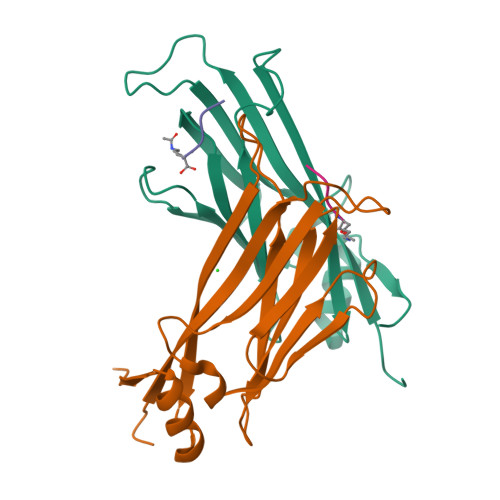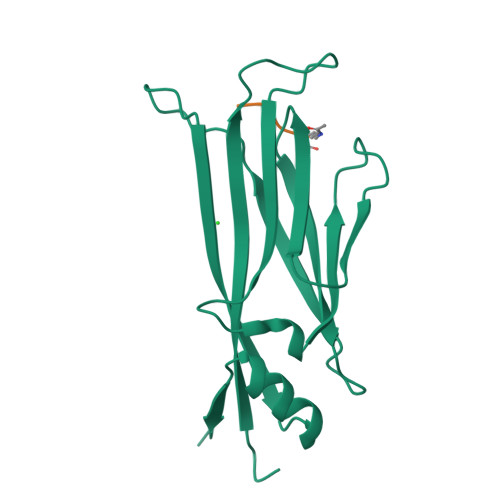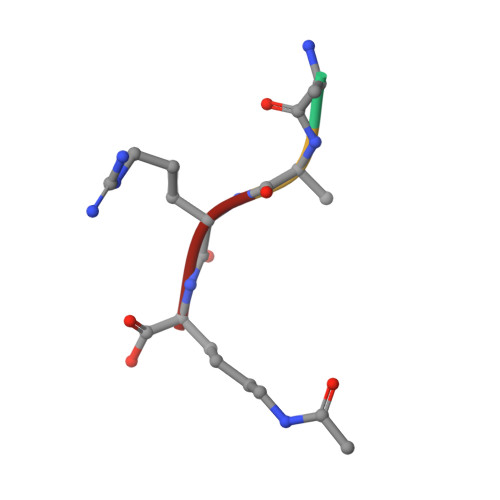Hotspot mutations in the structured ENL YEATS domain link aberrant transcriptional condensates and cancer.
Song, L., Yao, X., Li, H., Peng, B., Boka, A.P., Liu, Y., Chen, G., Liu, Z., Mathias, K.M., Xia, L., Li, Q., Mir, M., Li, Y., Li, H., Wan, L.(2022) Mol Cell 82: 4080-4098.e12
- PubMed: 36272410
- DOI: https://doi.org/10.1016/j.molcel.2022.09.034
- Primary Citation of Related Structures:
7E74, 7X88, 7X8B, 7X8F, 7X8G - PubMed Abstract:
Growing evidence suggests prevalence of transcriptional condensates on chromatin, yet their mechanisms of formation and functional significance remain largely unclear. In human cancer, a series of mutations in the histone acetylation reader ENL create gain-of-function mutants with increased transcriptional activation ability. Here, we show that these mutations, clustered in ENL's structured acetyl-reading YEATS domain, trigger aberrant condensates at native genomic targets through multivalent homotypic and heterotypic interactions. Mechanistically, mutation-induced structural changes in the YEATS domain, ENL's two disordered regions of opposing charges, and the incorporation of extrinsic elongation factors are all required for ENL condensate formation. Extensive mutagenesis establishes condensate formation as a driver of oncogenic gene activation. Furthermore, expression of ENL mutants beyond the endogenous level leads to non-functional condensates. Our findings provide new mechanistic and functional insights into cancer-associated condensates and support condensate dysregulation as an oncogenic mechanism.
Organizational Affiliation:
Department of Cancer Biology, Abramson Family Cancer Research Institute, University of Pennsylvania Perelman School of Medicine, Philadelphia, PA 19104, USA.




















